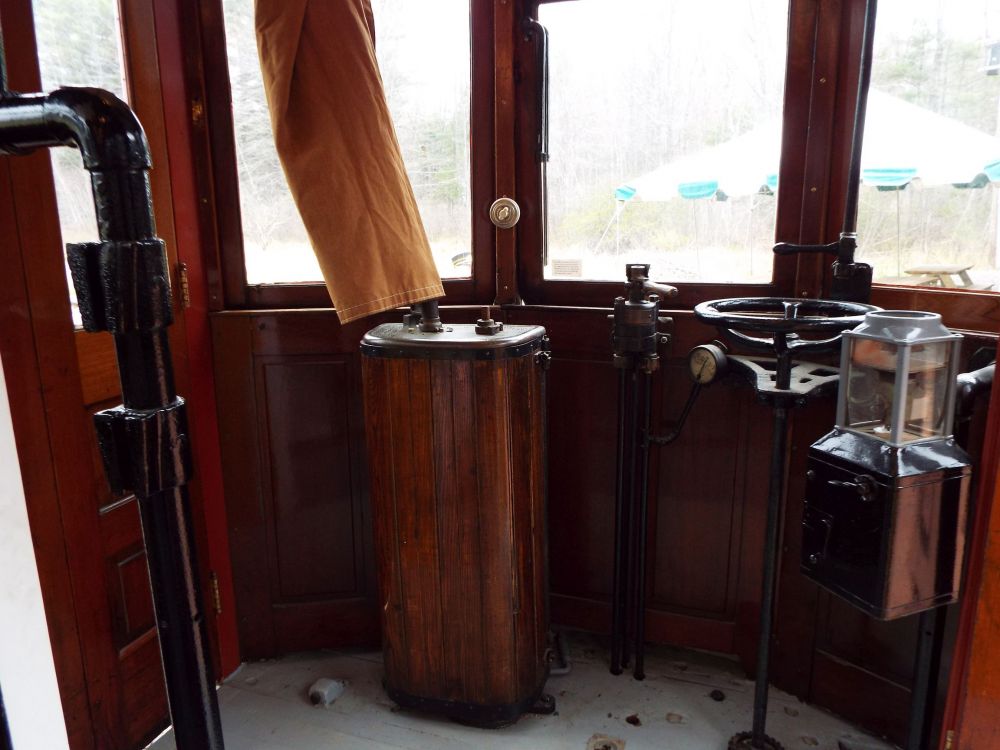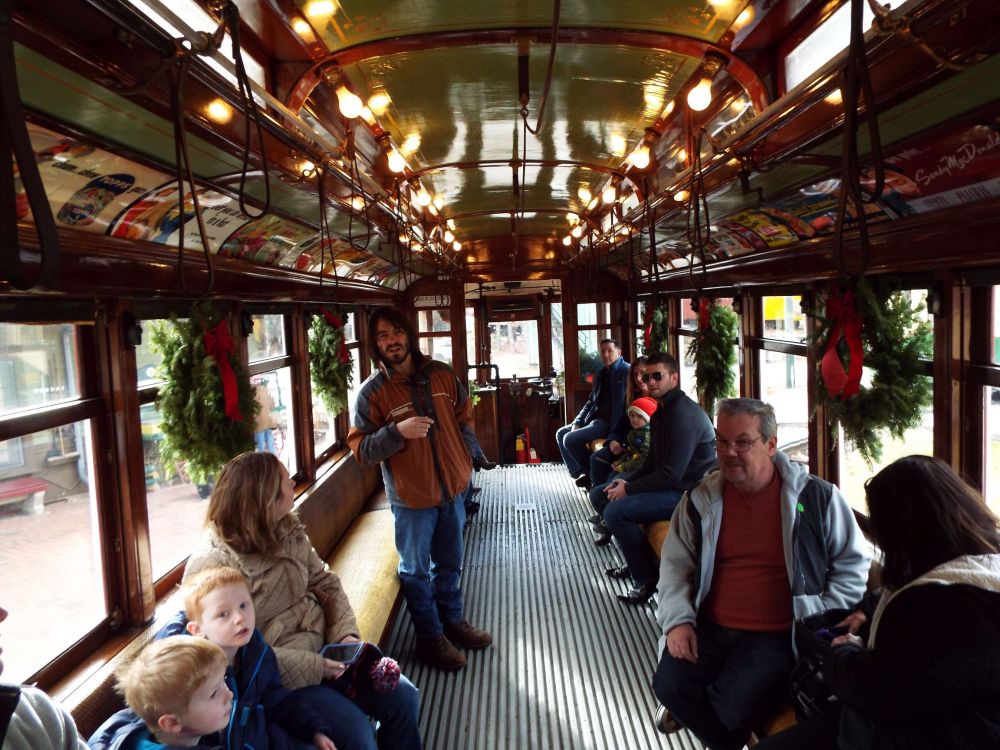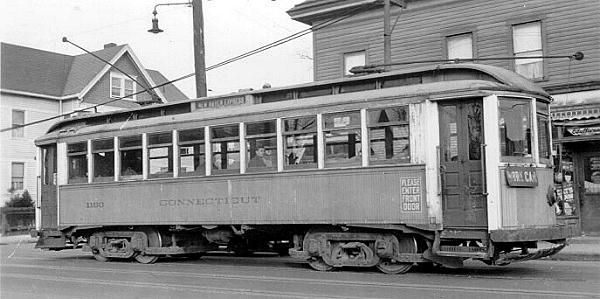
- Builder
- John Stephenson Car Co.
- Description
- Suburban
- Secondary Use
- None
- Type
- City and Suburban Streetcars
- Year
- 1906
- Retired from Service
- 1948
- Acquired by the Museum
- 1948
- Note
- Since 2011, No. 1160 has become a very reliable part of the museum's passenger fleet.
- Fund
- 640
Connecticut Company 1160
From New Haven, Connecticut
History
The Connecticut Company was formed in 1907 by consolidating operating companies in about eight cities in various parts of the state, including Torrington, Hartford, Middletown, Meriden, New Haven, New London, Norwich and Putnam . In addition, another large operator, the Connecticut Railway and Light Co., serving Stamford, Norwalk, Bridgeport, Ansonia-Derby, New Britain and Waterbury was leased. These fourteen cities formed the basis for thirteen operating divisions, each of which maintained its own roster of cars. On August 1, 1915 a new numbering system was introduced by the Connecticut Co. which renumbered all of its cars into a single sequence. Cars from a single order or type assigned to various divisions were kept together numerically, with a few minor exceptions. For that reason, each of Seashore’s Connecticut Co. cars has had two numbers.
No. 1160 (originally No. 542) was purchased by the Consolidated Railway (owned by the New York, New Haven & Hartford Railroad) in 1906 shortly before that company merged into the Connecticut Co., also owned by the Railroad. There was some uncertainty regarding No. 1160's builder because the builders plate was missing when the car arrived at Seashore. A Connecticut Co. roster listed Wason as the builder, and the car has Wason cast window lifts, but research by Roger Somers at Seashore in the 1990s concluded that Stephenson built No. 1160 due mostly to the specific design of the car's roof. Stephenson and Wason were both owned by J. G. Brill at this time.
From its formation in 1907, to 1916, when steel cars were adopted, the Connecticut Company bought hundreds of closed, wooden cars, all constructed to the same basic plan. These were simple, straight-sided cars with railroad and deck roofs, manual “armstrong” folding doors and drop platforms. Within this basic plan there were slight differences in length, seating arrangement and electrical equipment. As with the open cars, the introduction of rollsigns spurred a change to deck roofs for the final order, though small rollsigns were applied to the vestibule ends of earlier cars such as 1160. Of these cars, 1160 is a model with longitudinal seating that provided more area for standees, 10 windows set in a 30 foot body and four motors with K-6 control. Other cars of this type had cross seating with short longitudinal seats in the body corners. Although many of these cars remained in passenger service until 1948, by 1939, No. 1160 was converted to salt service and assigned to the track department. The car exterior was repaired and repainted in work car livery in 1941. It arrived at Seashore in this livery. The trucks received very little maintenance.
Prior to coming to Seashore Trolley Museum, CT Co. 1160 was stored in the upper level of James Street Car Barn in New Haven. While being stored there the track outside the barn was removed making an interesting challenge in loading the car for shipment to Maine. A ramp was constructed from wood timbers and rail from the entrance to the Barn out to the truck and trailer. No. 1160 was then unceremoniously dragged onto the truck. The reverse occurred when No. 1160 reached Seashore as there was no operational power at that time. No. 1160 did operate at Seashore during the beginning years of operation but was put into storage after its compressor failed. Other than shifting moves, No. 1160 did not move much until 1988 when restoration of the car began. Restoration continued through the 1990s and 2000s completing in 2011. Restoration involved dealing with worn out trucks, elongated bolt holes through which passed figure-eight shaped bolts, worn out bushings and bearings, and rotted wood. Much of the original components and wood still remain. Because 1160 carried salt to unfreeze turnouts as part of its track maintenance career, the steel platform knees needed to be replaced. The interior floor was replaced as it was salt soaked and would not have been healthy for the car in the long term. One side and one end have the original matchboard siding. The other side was replaced because of a large scrape incurred in passenger service on the Connecticut Co. The siding on one end was replaced because of an accident at Seashore. One crown piece was also replaced. Shortly after 1160 arrived at Seashore, tarpaper was applied to the roof totally saving the wood base. During restoration, the old canvas was removed and new canvas applied over the original wood base. The largest issue Seashore encountered was that one wheel/axle set had the wheels profiled out of round creating a severe vibration. It was necessary to pull the axle out and have it re-profiled.
Technical Information
- Seats: 44
- Control: K-6
- Brakes: Straight Air
- Compressor: DH-16
Trucks
- Number: 2
- Manufacturer: Standard
- Model: 050
Motor
- Number: 4
- Manufacturer: General Electric
- Model: 80
Weight and Dimensions
- Length: 41’
- Width: 8’ 4.00"
- Weight: 49300 lbs.
Additional Images

drone photo by Jeff Terry on May 20, 2023

Kenyon F. Karl on 04/29/17

Kenyon F. Karl on 05/17/16

Kenyon F. Karl on 12/03/16 decorated for Christmas Prelude

Ted Taetsch in New Haven - Bill Volkmer Collection at newdavesrailpix.com
© 1998 - 2026 New England Electric Railway Historical Society. All Rights Reserved.